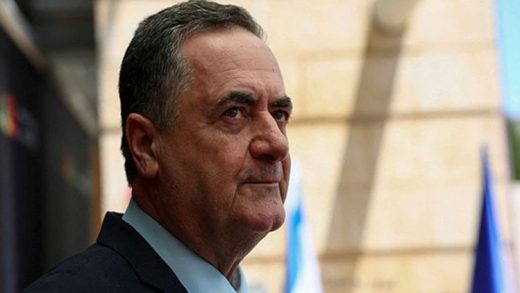Airlines in the United States seem to be separating into two groups. Delta Air Lines and United Airlines make lots of money. And then there’s everybody else.
Those two airlines have pulled ahead of the pack in recent years after making a few big bets. They expanded loyalty programs and leaned into selling more first- and business-class seats. And they operate lots of international flights.
That has paid off handsomely. Delta and United have generated most of the industry’s profits since 2022. And some experts believe their lead is only expanding.
“This is kind of the industry paradigm now,” said Tom Fitzgerald, an airline industry analyst for the investment bank TD Cowen. “I think the divergence is set to become more and more stark every year.”
Last week, Delta said it had earned more than $1.4 billion from July to September, up 11 percent from the same period a year earlier. United said on Wednesday that it had earned $949 million in the third quarter.
Both airlines have benefited substantially from increased revenue from loyalty programs and the sale of premium seats.
Of course, every business strategy has some risk, and Delta and United could struggle if other airlines figure out more effective ways to compete with them or if the economy weakens in ways that hit affluent consumers particularly hard.
Delta and United began putting their strategies in place years ago. After mergers in 2008 and 2010, they assembled fleets of jets suited to many uses, added premium seats to those planes, upgraded technology throughout the business and revamped their frequent-flier programs.
The airlines also added more routes and established partnerships with other airlines, extending their global reach. Those changes gave them new sources of revenue and made Delta and United more appealing to corporate executives and affluent travelers.
The companies also benefit from dominance at airports serving prosperous urban areas. Delta controls more than 70 percent of flights at airports serving Atlanta, Detroit, Minneapolis and Salt Lake City, not to mention its substantial presence in Boston, Seattle, and Kennedy International and LaGuardia Airports in New York, according to Cirium, an aviation data firm. United controls a majority of flights at airports serving Denver, Houston, New York, Washington and San Francisco.
“It’s supply and demand — if you can control the supply, then you really can set pricing,” said Kevin Healy, a senior adviser at Campbell-Hill, an aviation consulting firm, and a former airline executive.
American Airlines is similar to Delta and United. It has global reach and is dominant at several major airports. But it has not reported the same big profits.
Aviation experts say that is because American, of Fort Worth, has limited access to the same lucrative markets, the airline has not invested as much in premium seats and made changes that frustrated some corporate customers. American also carries a big debt.
American declined to comment ahead of announcing its financial results next week, but the airline is investing in lounges and premium seats and making other changes to attract wealthier customers and improve its performance.
Sales of premium seats have been a particular source of strength for Delta and United. A healthy stock market and the retirement of affluent baby boomers have helped to sustain demand for the expensive seats these airlines sell.
“What’s changed over the last 10 or 15 years: The premium products used to be loss leaders and now they’re the highest-margin products — that’s really the headline,” Glen Hauenstein, Delta’s president, told analysts and reporters on a call last week.
Delta says most of its revenue now comes from households that earn at least $100,000 year. Mr. Hauenstein also said that, in some cases, leisure travelers paying high fares had squeezed out business travelers, typically the most sought-after customers because their employers pay for their trips.
Delta expects premium revenue — from expensive seats, credit cards and other sources — to exceed that from the main cabin by 2027, reversing a long trend. United, too, has capitalized well on rising premium demand.
Loyalty programs have also become a huge source of profits.
Starting about a decade ago, Delta, United and other airlines changed their frequent-flier programs to reward customers based on how much they spent, not how far they flew. The airlines also added lounges and other perks to make loyalty programs more appealing.
The airlines now bring in billions of dollars each year from those programs, much of it in profit. In the third quarter alone, Delta received about $2 billion from American Express, which runs its co-branded credit card. That was 12 percent more than it earned the year prior. United said its loyalty revenue in the third quarter was up about 9 percent from the same period last year.
“We’ve invested in customers at every price point,” the airline’s chief executive, Scott Kirby, said in a news release on Wednesday. “Those investments over almost a decade, combined with great service from our people, have allowed United to win and retain brand-loyal customers, leading to economic resilience.”
As Delta and United generated consistent profits in recent years, carriers that specialized in offering lower-priced tickets lost their edge. Budget airlines once excelled at operating at relatively low costs, but labor, airport access and other parts of the business have become more expensive in recent years, eroding that advantage. That, along with a glut of domestic seats, has squeezed the discount carriers.
What About Economy Travelers?
Now the low-fare airlines are emulating Delta and United. Spirit Airlines, now in its second bankruptcy in a year, and Frontier Airlines, another budget carrier, have introduced premium-like offerings. Even Southwest Airlines, which for decades eschewed the approaches used by the other big carriers, has been remaking itself more in their mold.
Because premium demand appears to be here to stay, analysts at J.P. Morgan said in a note last week, they now believe that the advantage airlines like Delta and United have over lower-cost rivals that offer only economy seats is “both permanent and irreversible.”
Of course, no airline is unassailable, and the industry is rife with companies that went from roaring success to penury.
“The thing that’s going to ruin it for Delta and United is American,” said Nicolas Owens, an analyst for Morningstar, the financial services company. “If American spent a billion dollars and sent all their planes to the shop and redid the seating arrangement, would they not have the same outcome?”
Economic conditions can pose a threat, too. A downturn, particularly one that sends stock prices tumbling or that hits wealthy consumers particularly hard, could greatly reduce demand for premium seats and make travelers more price conscious.
Shortages of planes, workers and air traffic controllers have limited competition among airlines in recent years. But Airbus and Boeing are trying to produce planes more quickly, and the Federal Aviation Administration is working to hire more controllers. If it becomes easier for airlines to buy new planes and fly more routes, other carriers might find it easier to compete with Delta and United.
“They have pulled ahead and they are performing well, and they’ve done things that have made it better,” Mr. Owens said. “But that doesn’t mean they’ve changed the laws of physics.”

